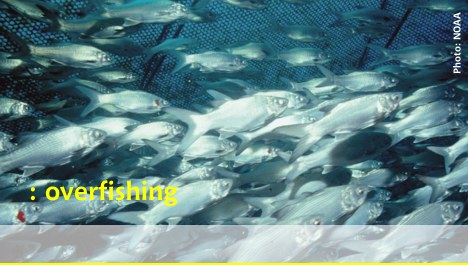|
|

| Unsustainable
high-tech fishing |
| Fish
is a healthy and popular component of our diet, but natural resources can
no longer satisfy the global appetite for marine products. Despite catching
techniques becoming more efficient and ruthless, the amount of fish caught
in nets is decreasing. Fish stocks of many harvested species have collapsed,
and are no longer commercially viable. The latest studies are alarming:
If we continue to follow this trend, all presently utilized fish, molluscs
and crustaceans will have collapsed by the year 2048*. Without fundamental
changes in our attitude towards marine life, this century will be the last
for many wild fish species and a broad array of other marine animals. |
*
Worm, B. et al. (2006): Impacts
of biodiversity loss on ocean ecosystem services
Science
314:787-790 |
| Remaining
commercial fish stocks by the year: |

 |
Reducing
of fishing pressure by up to 50% |
 |
Establishment
of marine reserves
(MPA´s
- Marine Protected Areas). |
 |
Use
a fish guide to sustainable seafood shopping. These check lists (eg. published
by WWF) provide information on catching methods and the status of fish
populations. |
 |
In
general: refuse to consume overfished species
like tuna, swordfish, codfish, eel and clod. Choose
fish of relative stable populations like herring,
halibut (Pacific), sprat, coalfish or fish from aquaculture. |
|
Pay
attention to the MSC label
(Marine
Stewardship Council).
www.msc.org |
 |
|
|







